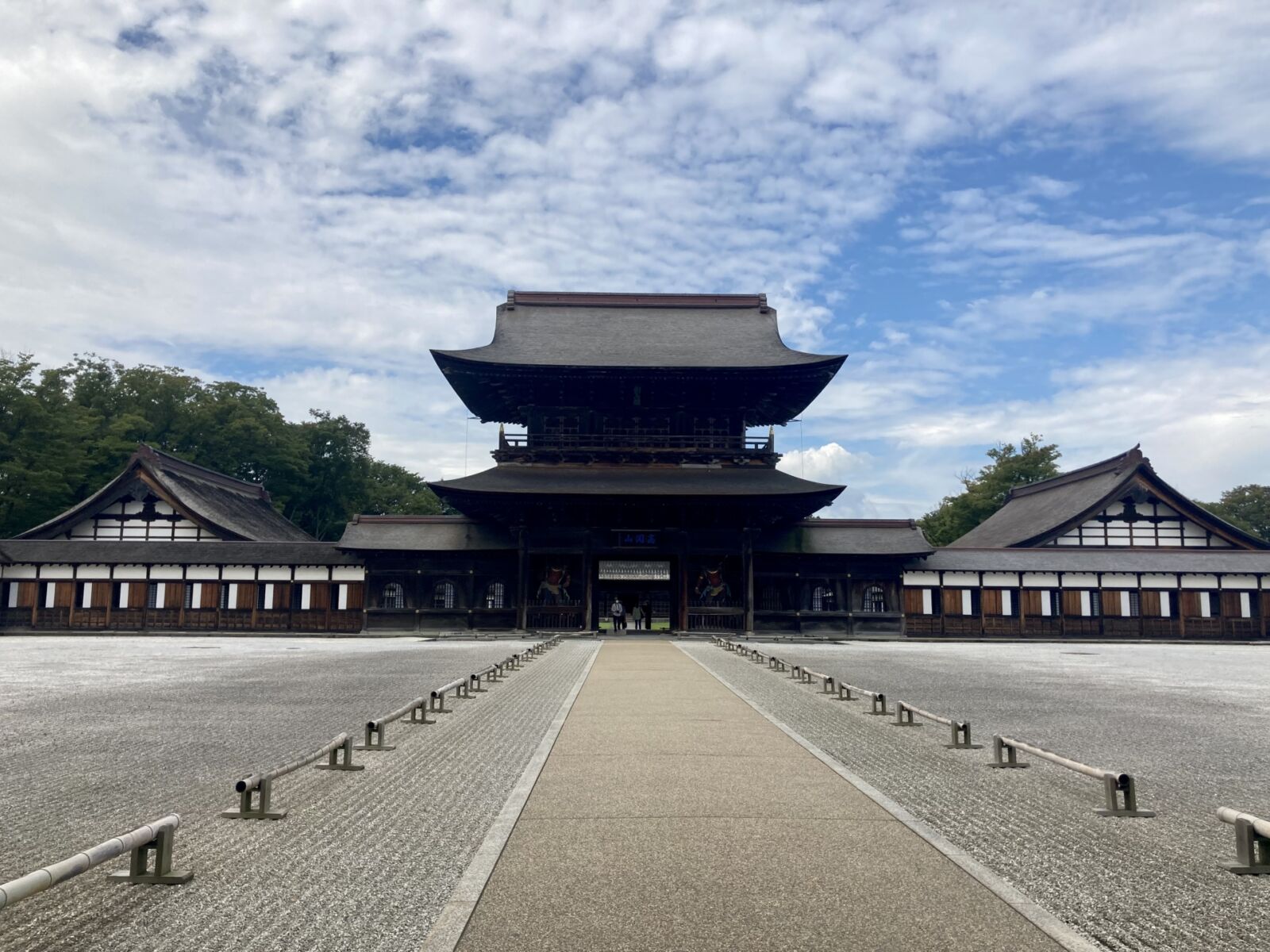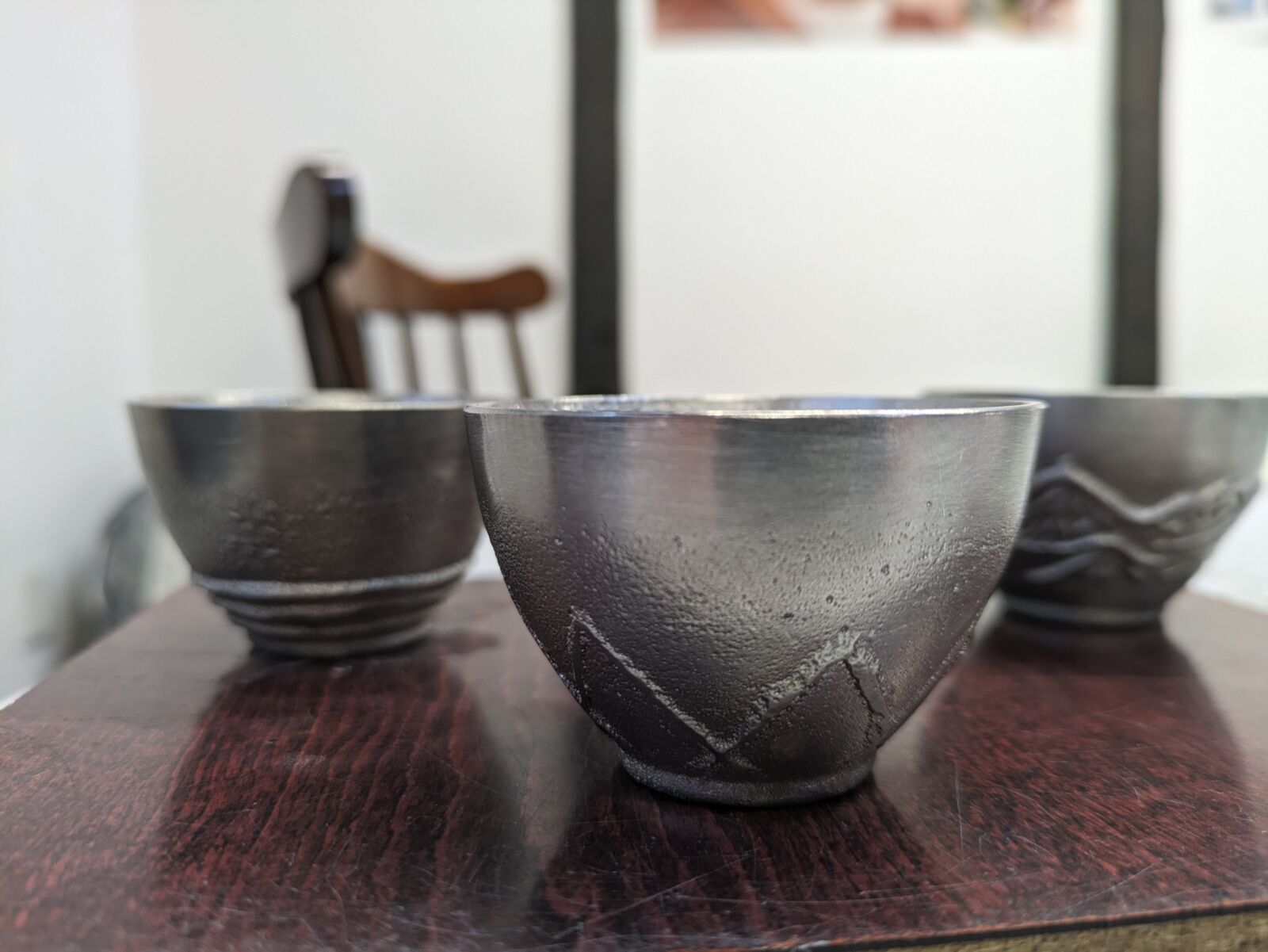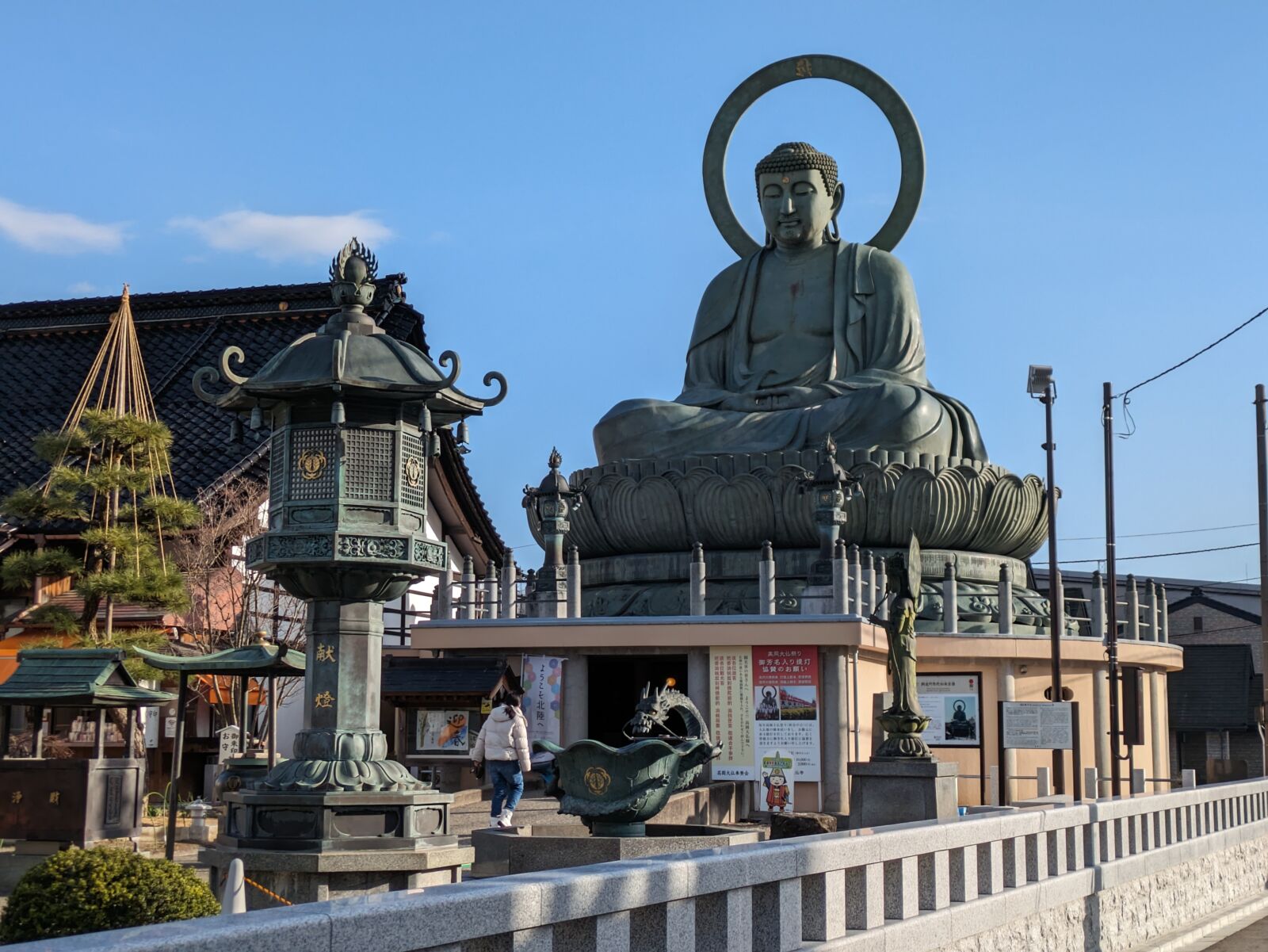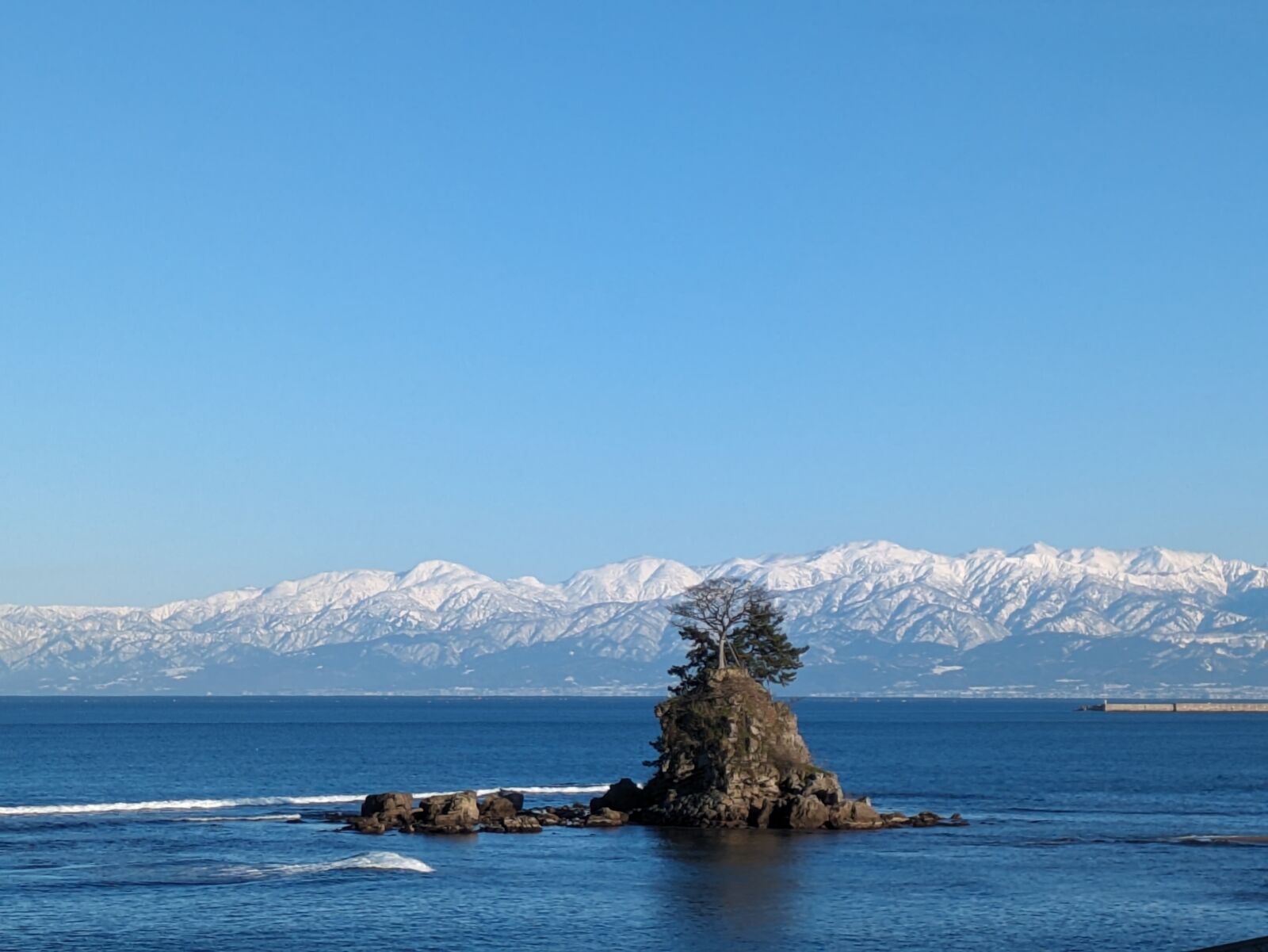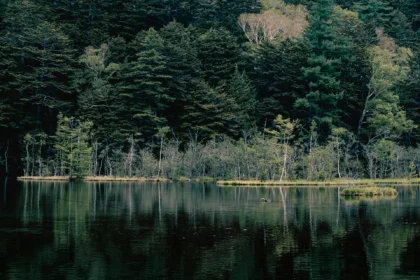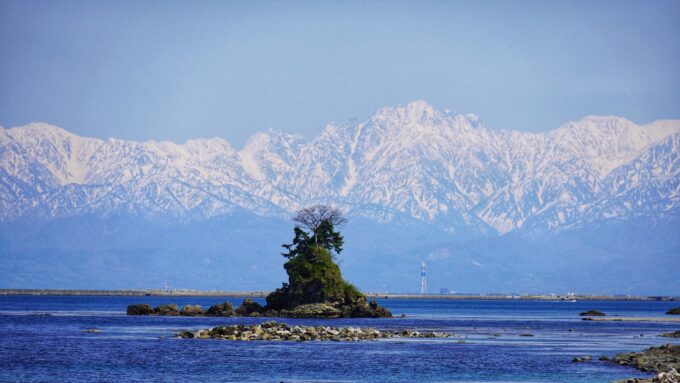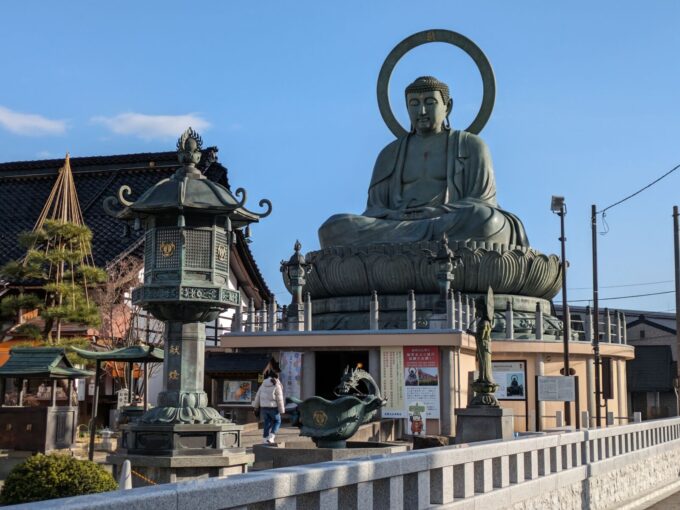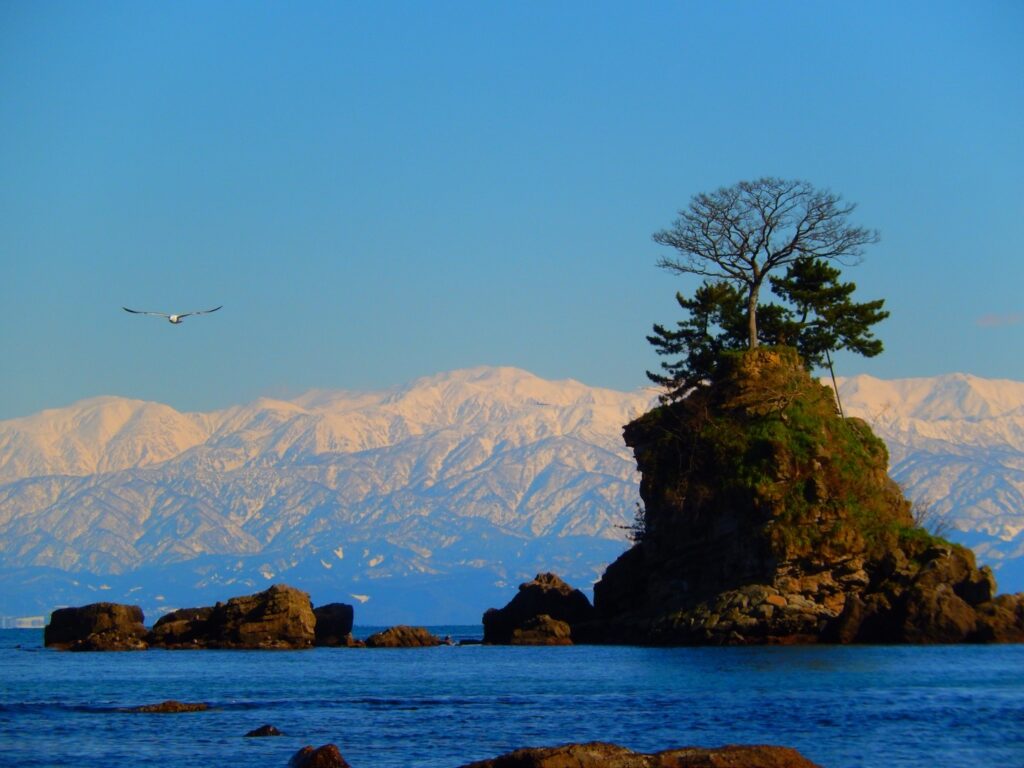
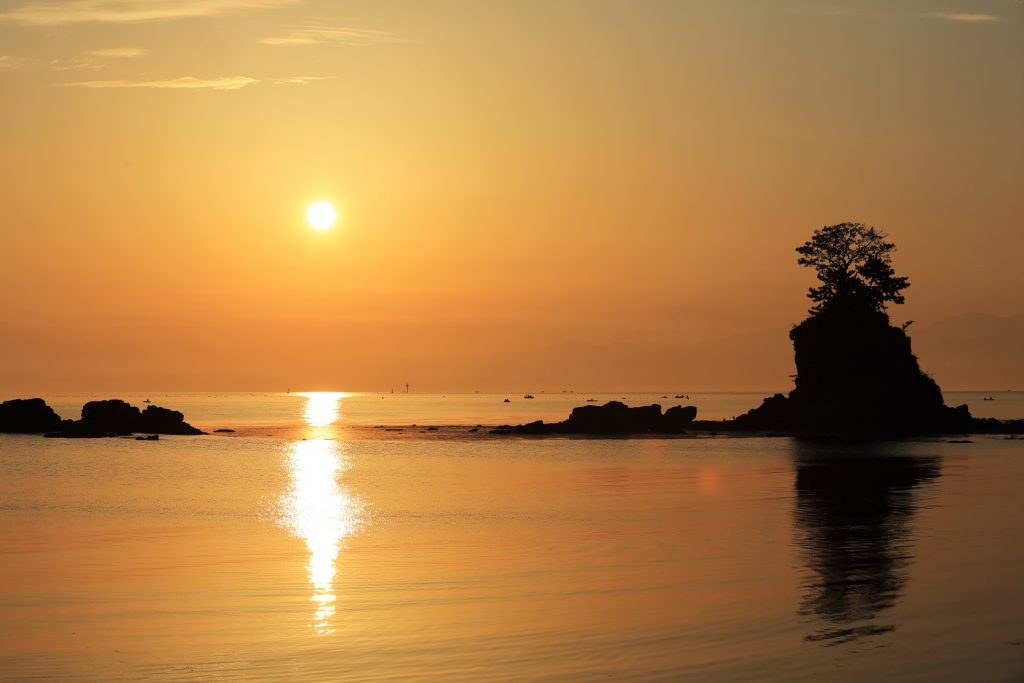
The beauty of this area has been noted since mid-700s in the famous anthology of poetry called the Man'yoshu. The region surrounding Amaharashi was site of the government of Ecchu, or modern Toyama prefecture for centuries. This made it a center of learning and religion that drew people from all over Japan to this "outpost in the North." Today, though, it is relatively quiet, with the coast lined by factories and fisherman harvesting the famous white shrimp of Toyama Bay. You can walk the footsteps of some of the most famous poets in Japanese history and see Onnaiwa Rock with the Mt. Tateyama and other mountains in the range in the background.
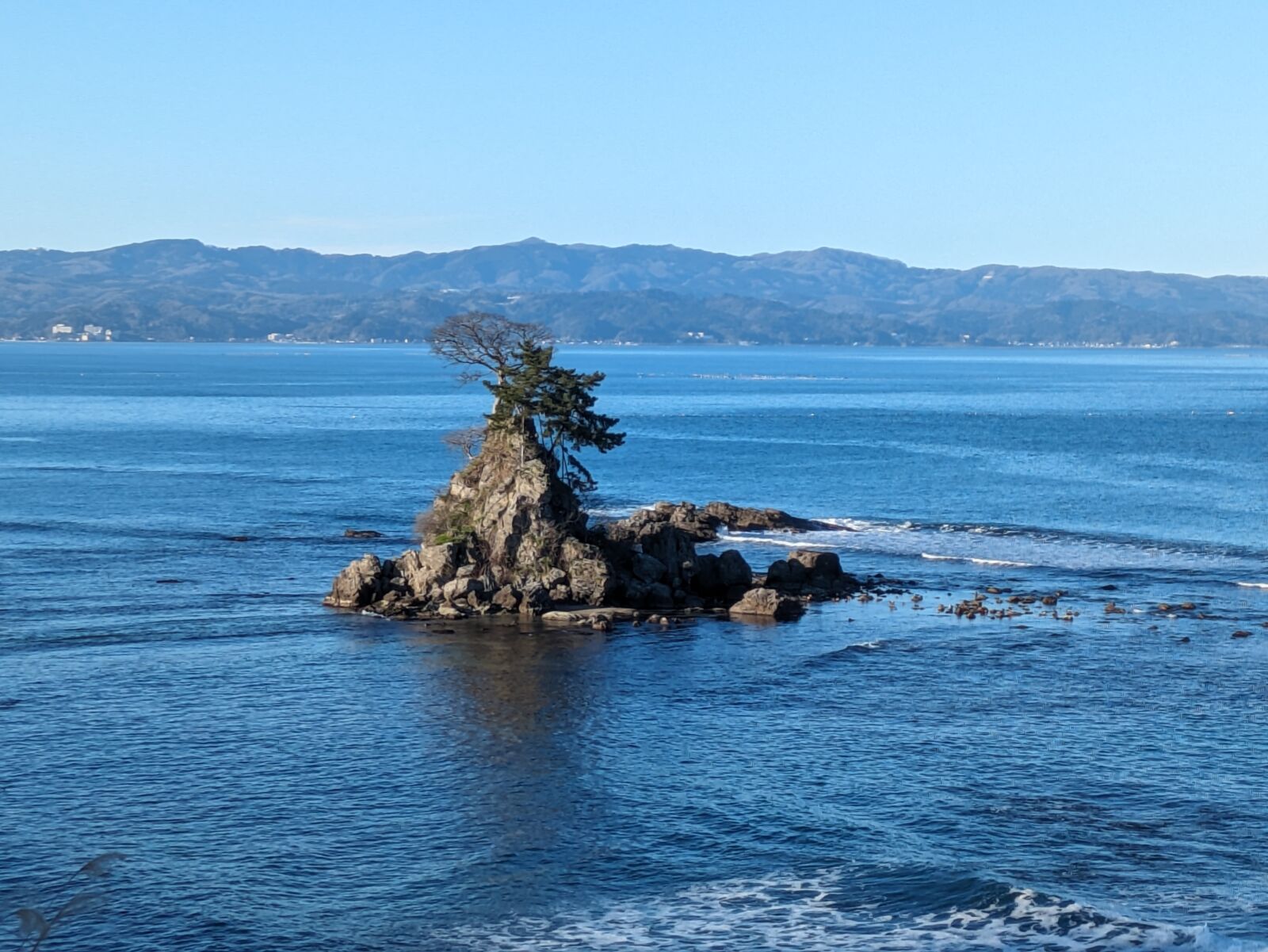
Although it is definitely possible to see the island with the mountains in the background any time of year, there is a best season. If you want to see the white mountains, December is when there is a chance to see snow coverage but from January until April is when it is its most magnificent. The skies are also clearer in the winter, so you will be able to see the mountains behind sharply and not in the haze of summer. Just be careful of those winter storms that roll through every couple weeks. Coming in the summer is not a bad idea though, there are places where you can actually get into the water if you want to swim. Each season brings its own unique aspects to explore.
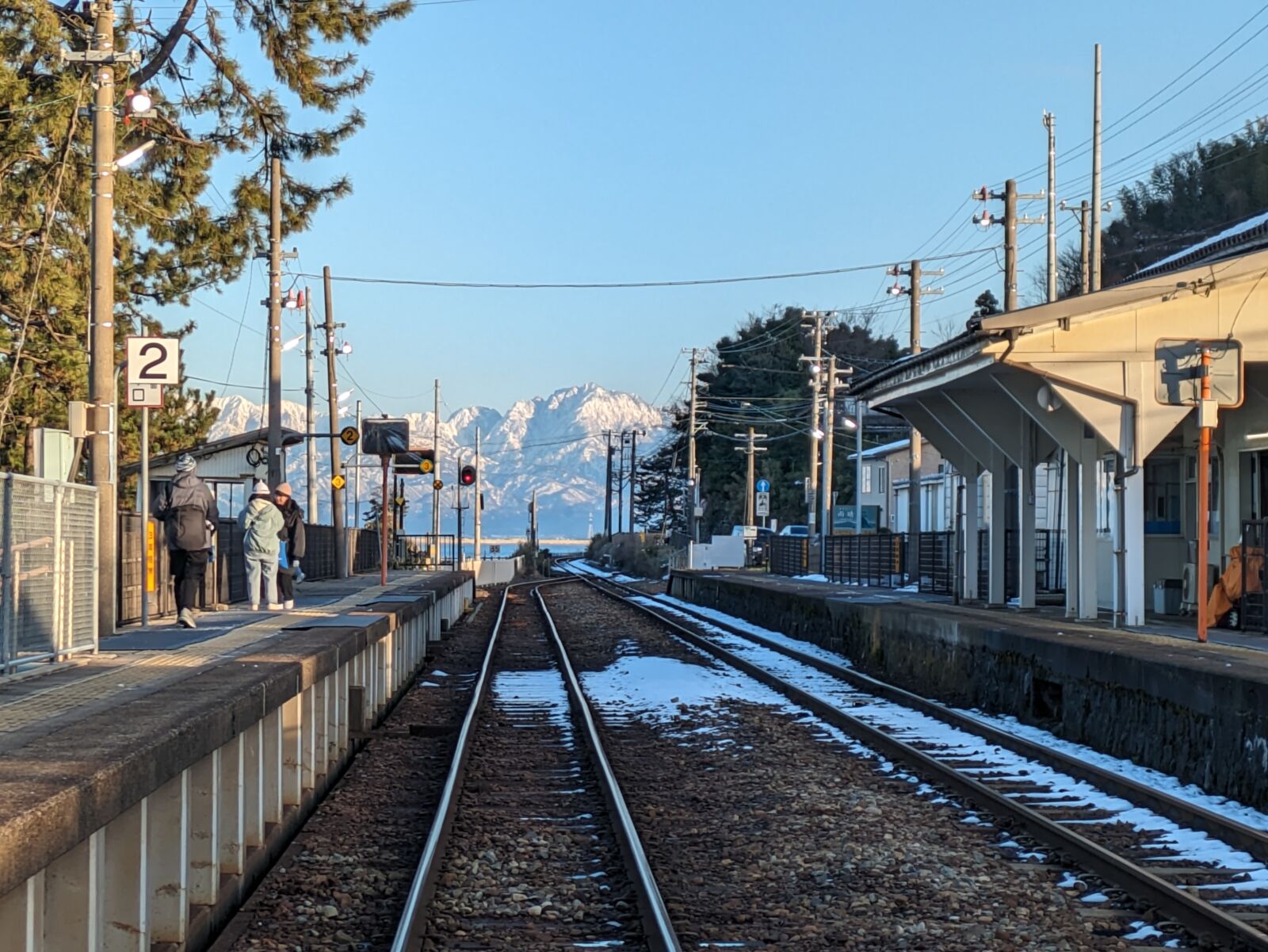
The western area of Toyama, especially Takaoka, is an area with a history that stretches back to the first formation of "Japan" with landscapes that inspired poets. Join us for a tour of Takaoka, the City of Japan Heritage Sites. We will see the large and impressive Zuiryuji Temple, the Big Buddha of Takaoka, trying metalworking and, finally, visiting the Amaharashi Coast. It is a full day and you can experience the breadth of Japanese culture and landscapes. Check it out below!
AMAHARASHI / all year round
1 Day Tour from Kanazawa: Beautiful Amaharashi, A Big Buddha and the Shogawa Valley River Cruise
- Spots:
- Pick-up:
- Drop-off:
Toyama Bay is renowned for its fresh seafood and the majestic Northern Japanese Alps that tower above it. This tour takes you to Amaharashi, a famous spot for breath-taking views of the snow-capped mountains, and then to Takaoka to admire the iconic Big Buddha. You’ll enjoy the region’s excellent food options before heading into the mountains for a scenic cruise on the Shogawa River. The valley offers stunning views year-round, from snowy landscapes in winter to vivid greenery in summer and fiery red leaves in autumn. Combining coastal and mountain beauty, this tour provides a perfect glimpse into Japan’s diverse scenery.
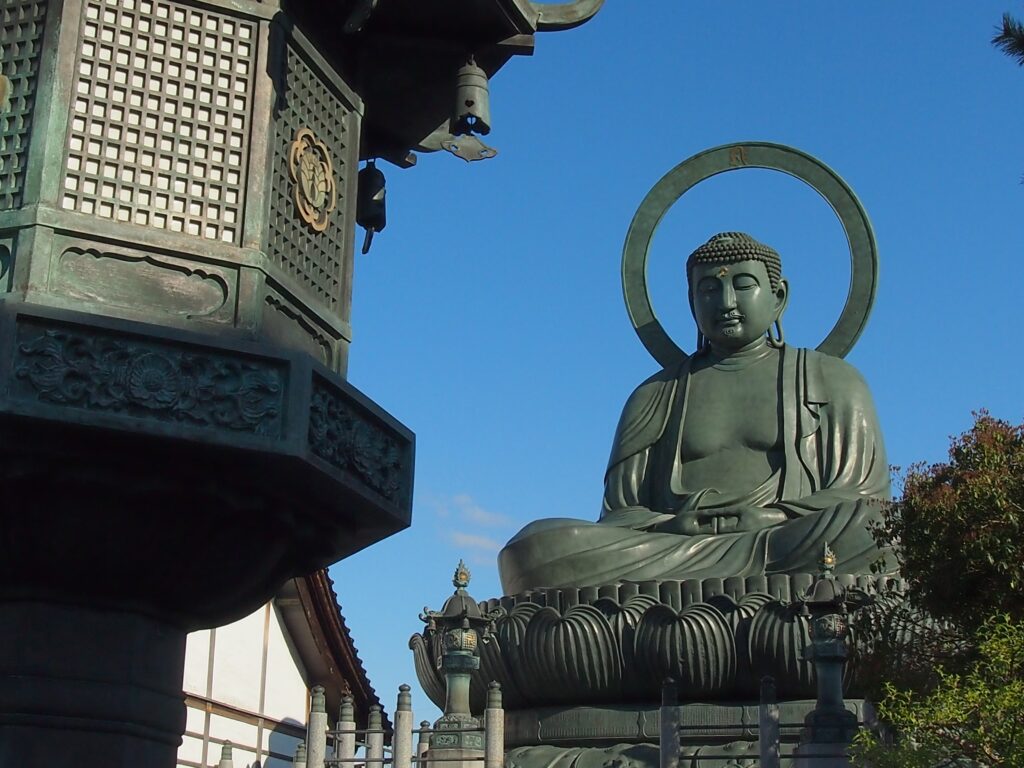
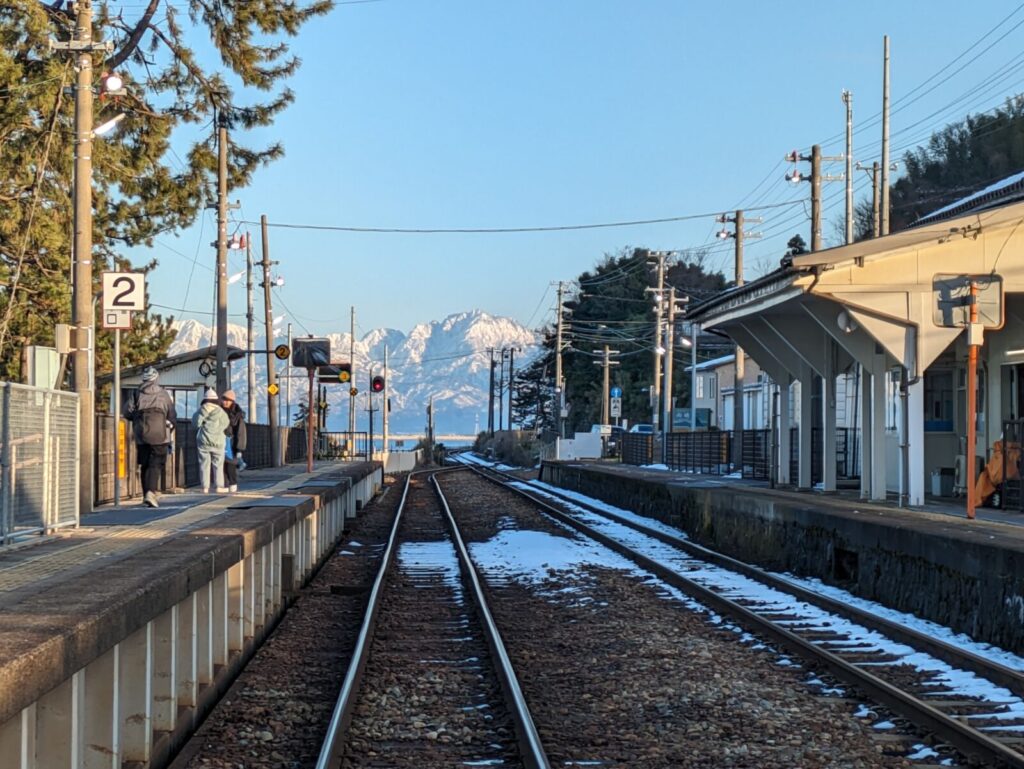
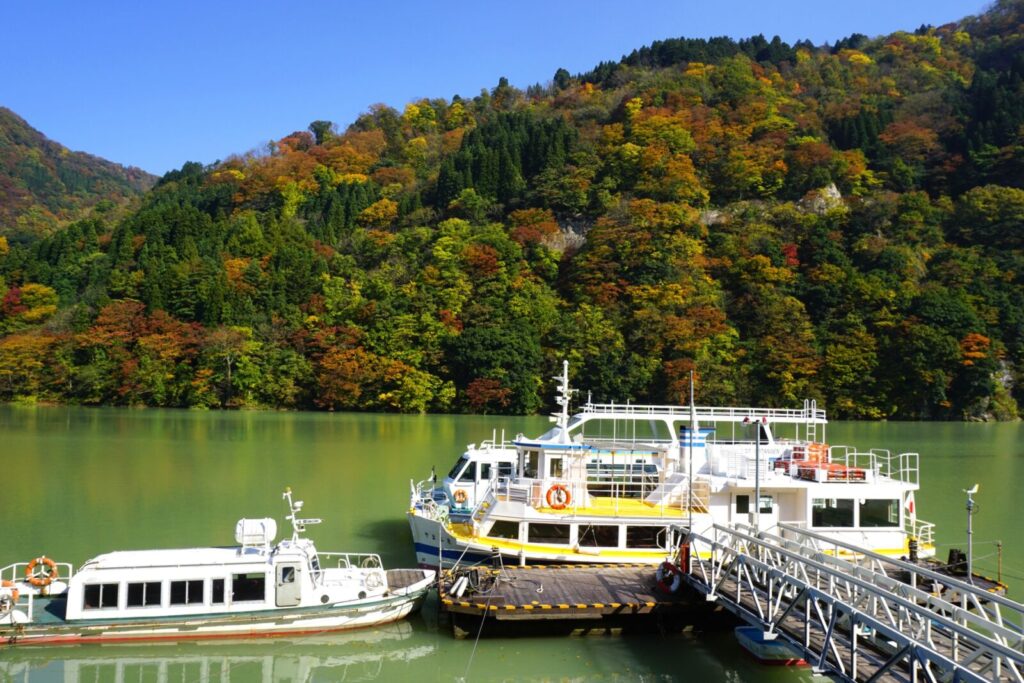
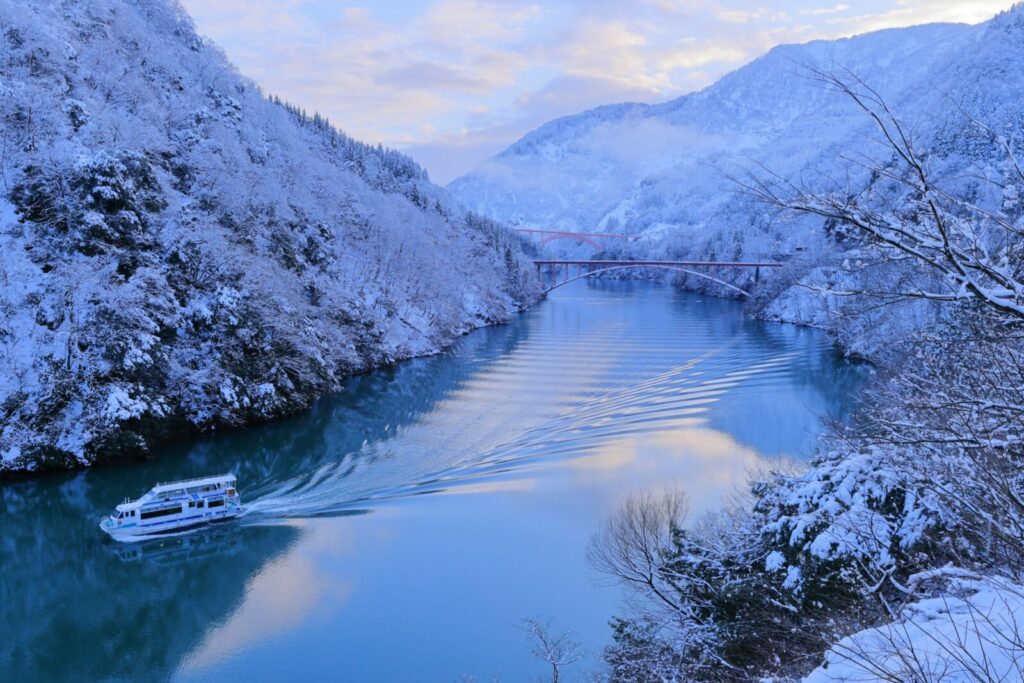
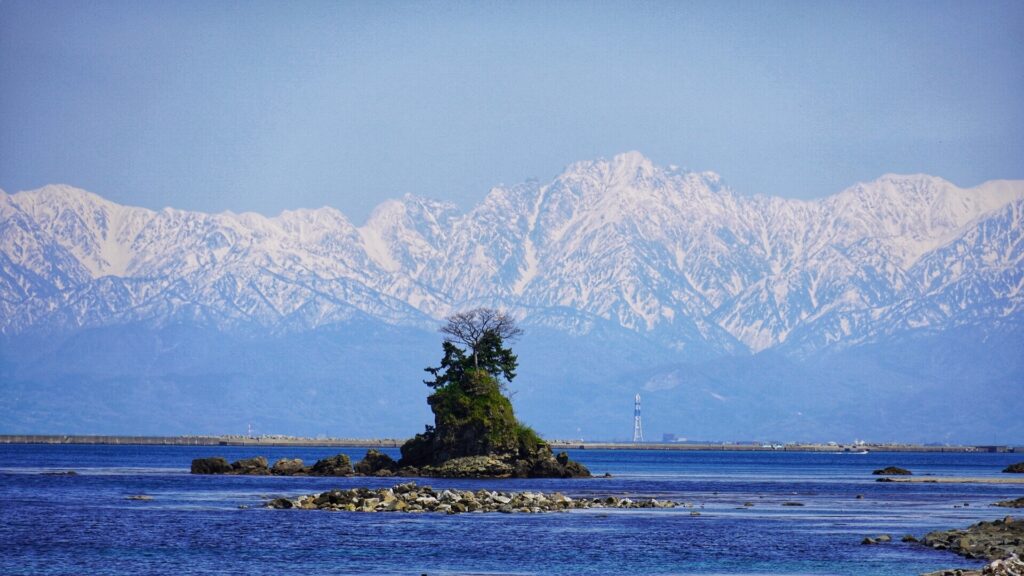
TAKAOKA TOUR FROM KANAZAWA / all year round
1 Day Tour from Kanazawa: Takaoka's Temples, Metalworking and Mountain Views
- Spots:
- Pick-up:
- Drop-off:
The second city of the Maeda clan during the Edo period and now the second city of Toyama prefecture, this historically important city has a diversity of sights and activities that shouldn't be missed! This private tour can start from either Kanazawa Station or Takaoka. In the morning we will explore 300 year old Zuiryuji Temple, which has the unique statue of a toilet god, very symmetric continental-style construction and a central altar imported from China. After the temple, we will head to the Takaoka Big Buddha that has existed in some form for the past couple hundred years. The current metal version dates back to the 1930's. As we head towards the metalworking experience, we will pass through some historic streets with many buildings from the late 1800's. The architecture here is quite unique and not seen in most of Japan. The last activity of the morning is the metalworking experience where you can make a tin sake cup or chopstick holders.
After lunch we hop on the train to the south and Shokoji Temple, another amazing temple with a gold plated interior. This area was the center for religion in Toyama prefecture until the Edo period. We will then get on another very short train to Amaharashi to see the stunning view of the Northern Japanese Alps across Toyama. This area has some other sights in the area to see, all of which have those beautiful mountains in the background.
